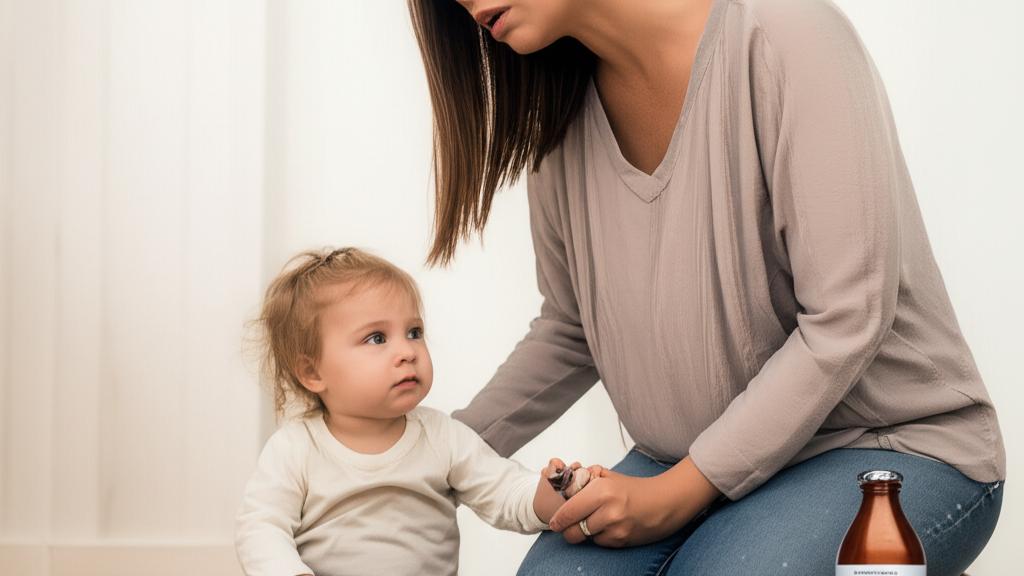It’s a moment of pure, stomach-dropping panic. You turn your back for a second, and your toddler is suddenly holding an open bottle of pills. Or maybe you find a loved one confused and disoriented next to their medication. The first, primal thought is often: “I need to get it out. Now.” For decades, the go-to answer for this was a little brown bottle kept in the back of the medicine cabinet: Ipecac syrup. The idea was to force vomiting to remove the poison. But as doctors, our understanding has grown, and we’ve learned that this old advice can sometimes do more harm than good. Let’s talk about why.
What Exactly Is Ipecac Syrup?
Simply put, Ipecac syrup is an emetic—a medicine whose only job is to make you vomit. It works by irritating the stomach lining and stimulating the part of the brain that controls the vomiting reflex. For a long time, it was a staple in household first-aid kits, recommended for certain types of poisoning or overdoses.
The logic seemed sound: if someone swallows something dangerous, make them throw it up. But medicine evolves, and we now know the reality is much more complicated.
The Big Shift: Why We Don’t Recommend Ipecac Syrup at Home Anymore
The American Academy of Pediatrics and poison control centers across the country have changed their tune, and for very good reasons. Keeping Ipecac at home is no longer a safety measure. Here’s why our thinking has shifted:
- It’s not very effective. Studies showed that even after using Ipecac, a large amount of the poison could remain in the stomach. It just doesn’t empty the stomach completely.
- It can delay better treatment. The most effective single treatment for many poisonings is activated charcoal, which acts like a sponge to soak up the poison in the stomach. If a person has already taken Ipecac, they will likely vomit for an hour or more, making it impossible for them to keep the activated charcoal down.
- Vomiting can be dangerous. For some substances, the trip back up is just as damaging as the trip down. Caustic substances like drain cleaner, bleach, or petroleum products can cause a second burn to the esophagus and throat on their way out.
- It has its own risks. Ipecac itself isn’t harmless. It can cause serious side effects that can be confused with the symptoms of the poisoning itself, making it harder for emergency room doctors to figure out what’s going on.
The single most important takeaway is this: If you still have a bottle of Ipecac syrup in your home, please throw it away. It is no longer considered a safe or effective part of a home first-aid plan.
What to Do in a Poisoning Emergency Instead
Okay, So Ipecac is out. What’s the right thing to do in that moment of panic? It’s simple and incredibly effective.
- Stay as calm as you can. Take the substance away from the person.
- IMMEDIATELY call the National Poison Control Center at 1-800-222-1222. Put this number in your phone right now. They are your first and best resource. These experts are available 24/7.
- Do NOT give the person anything to eat or drink, and do not try to make them vomit unless you are specifically instructed to by the poison control expert or a 911 operator.
When you call, they will ask you for key information to help guide you:
- The person’s age and weight
- The name of the substance they swallowed (have the bottle with you if possible)
- How much you think they took
- The time it was swallowed
- Any symptoms the person is showing
Understanding the Risks and Interactions of Ipecac
On the rare occasion that Ipecac is used in a controlled medical setting, it’s critical to be aware of its side effects and interactions. The side effects themselves can be quite serious and are a major reason its use has declined.
Someone who has taken Ipecac might experience:
- Chest pain or a fast, irregular heartbeat
- Breathing problems or a persistent cough
- Feeling faint or lightheaded
- Unusual weakness or prolonged drowsiness
- Diarrhea and stomach pain that continues long after the initial vomiting
Furthermore, Ipecac’s effectiveness can be blocked by several common things, which is another reason it’s so tricky to use.
| Substance | Why It’s a Problem |
|---|---|
| Activated Charcoal | This is the big one. Charcoal will bind to the Ipecac and stop it from working. And since charcoal is often the preferred treatment, giving Ipecac first can prevent the better option. |
| Milk or Food | Taking Ipecac with milk or food can delay its action, giving the poison more time to be absorbed by the body. It should only be taken with water. |
| Anti-Nausea Medicines | Medications like ondansetron (Zofran) or prochlorperazine are designed to stop vomiting. They will work against the Ipecac, making it ineffective. |
Take-Home Message
- Ipecac syrup is an old medicine used to induce vomiting that is no longer recommended for home first-aid kits.
- If you suspect a poisoning, your first and most important step is to call the National Poison Control Center at 1-800-222-1222.
- Never induce vomiting with your finger or any substance unless explicitly told to do so by a medical professional.
- Ipecac can cause dangerous side effects and prevent more effective treatments like activated charcoal from working.
- Please check your medicine cabinet today and safely dispose of any old bottles of Ipecac you may find.
Accidents are a part of life, but knowing the right first step can make all the difference in a scary situation. You’re not alone in this, and help is just a phone call away.
Ipecac syrup, poisoning, poison control, emetic, activated charcoal


